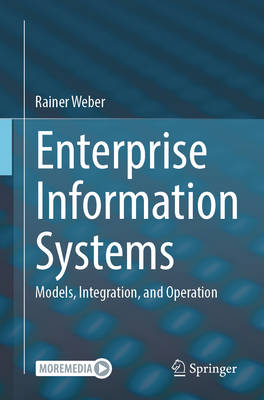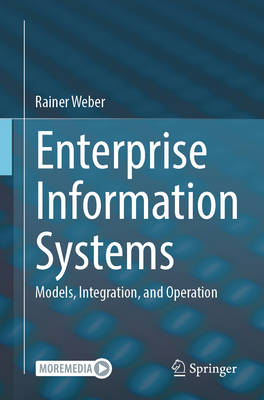
- Afhalen na 1 uur in een winkel met voorraad
- Gratis thuislevering in België vanaf € 30
- Ruim aanbod met 7 miljoen producten
- Afhalen na 1 uur in een winkel met voorraad
- Gratis thuislevering in België vanaf € 30
- Ruim aanbod met 7 miljoen producten
Zoeken
€ 92,95
+ 185 punten
Omschrijving
This textbook presents the fundamentals of both transactional and analytical enterprise information systems, including their operation and integration in a system landscape. Its particular concern is to establish a close connection between business and computer science topics, e.g. related to the modeling of business objects and business data, or for the integration of enterprise information systems. The book is structured in three parts. "System Models" deals with the two types of enterprise information systems, transactional and analytical systems. It also introduces the various platforms, ranging from the "classic" three-tier client-server architecture to newer developments like in-memory computing, and discusses deployment options like pairs on-premises and cloud on the one hand, and monolithic systems and microservices on the other. Next, "Integration" deals with technical aspects for the combination of several enterprise information systems, describing a variety of techniques: integration via the user interface, through data exchange, through message brokers and Web services, or via process management systems. Eventually "Operations" covers topics related to the whole system lifecycle from selection and implementation to access control and administration. The book is primarily aimed at bachelor students in information systems, who deal with the architecture of enterprise information systems. It can also be used by practitioners in industry for either self-study or to gain insight into information systems. To illustrate concepts, realizations in selected enterprise information systems such as SAP, Microsoft Dynamics 365 Business Central, Vtiger CRM and Pentaho are described.
Specificaties
Betrokkenen
- Auteur(s):
- Uitgeverij:
Inhoud
- Aantal bladzijden:
- 319
- Taal:
- Engels
Eigenschappen
- Productcode (EAN):
- 9783662717172
- Verschijningsdatum:
- 5/01/2026
- Uitvoering:
- Paperback
- Formaat:
- Trade paperback (VS)
- Afmetingen:
- 155 mm x 235 mm

Alleen bij Standaard Boekhandel
+ 185 punten op je klantenkaart van Standaard Boekhandel
Beoordelingen
We publiceren alleen reviews die voldoen aan de voorwaarden voor reviews. Bekijk onze voorwaarden voor reviews.








